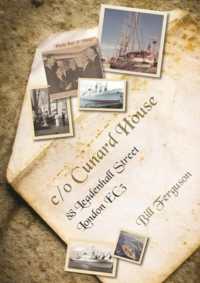Full Description
Considering the composition classroom as a mad scientist's laboratory, The Mad Scientist's Guide to Composition introduces different kinds of writing as experiments. Writing an essay is a task that can strike fear into a student's heart, but performing an experiment licenses creativity and doesn't presume that one knows the outcome from the start.The Mad Scientist's Guide covers the kinds of writing most often required on college campuses, while also addressing important steps and activities frequently overlooked in composition guides, such as revision and peer reviewing. Actual examples of student writing are included throughout, as are helpful reminders and tips to help students polish their skills. Above all, the Mad Scientist's Guide seeks to make writing fun.
Contents
Introduction
Chapter 1: Nuts and Bolts (Mechanics)
Chapter 2: Graverobbing (Finding, Evaluating, and Incorporating Sources)
Chapter 3: Readying the Lab (Brainstorming, Formulating an Argument, Outlining)
Chapter 4: Conducting Experiments (Writing to Inform, Writing to Persuade, and Writing to Evaluate)
Chapter 5: The Monster Lives! or Does It? (Revision, Peer Reviewing, Retroactive Outlining)
Chapter 6: Placating Ghosts (Systems of Citing Sources to Avoid Angering the Dead ... and the Living)
Chapter 7: The Great Beyond
Addendum 1: A Successful Experiment!
Addendum 2: A Successful Experiment!
Addendum 3: Common Mad Scientist Mistakes (and How to Avoid Them)
Addendum 4: Finishing Touches
Permissions Acknowledgments
Index







